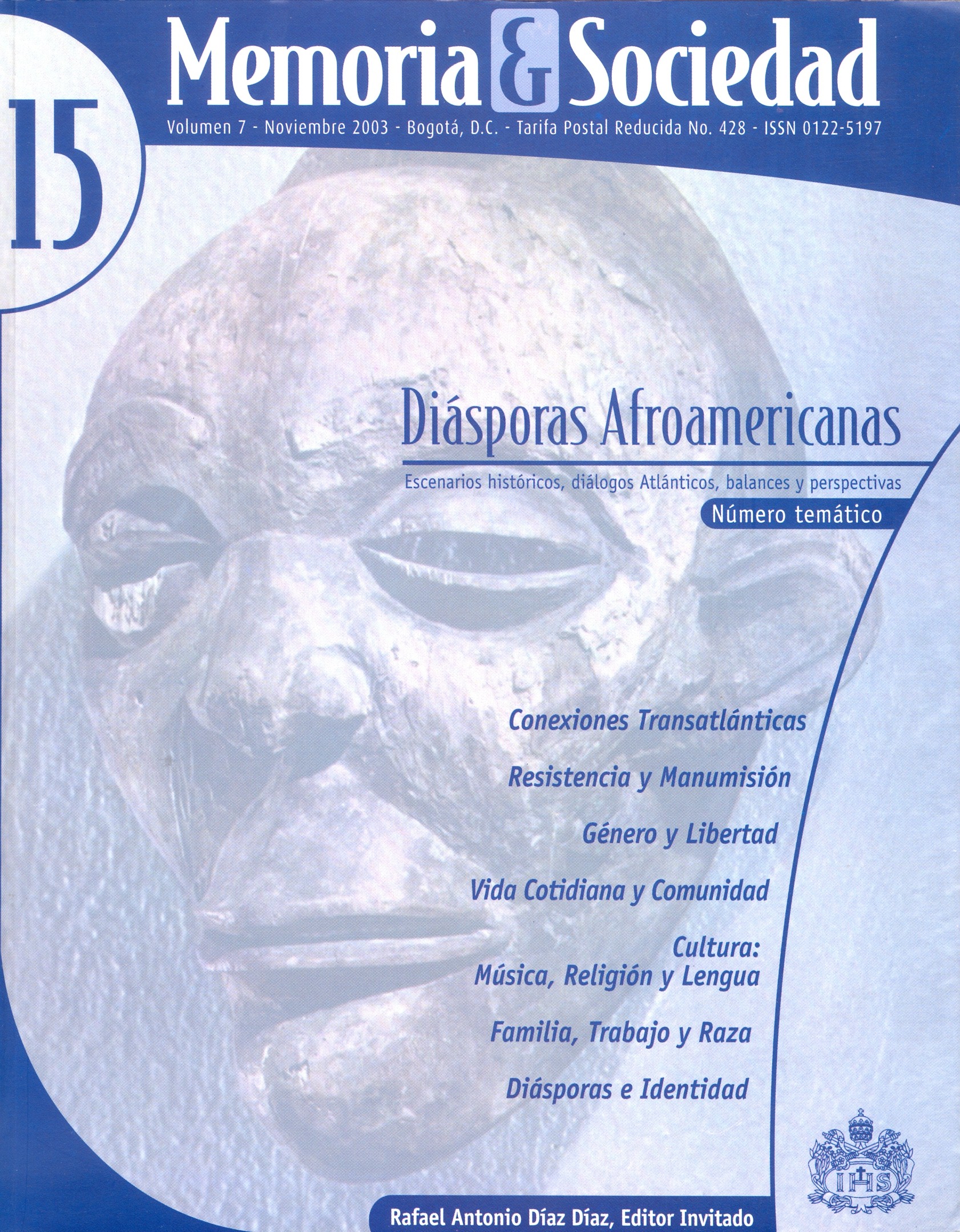Abstract
Mexican historiography concerning the presence of Africans and their descendents in Mexico has emphasized slaves and free-persons, but there has been little writing on analyzing the relationships between the owners of slaves and the slaves in everyday life. In the essay that follows, I discuss the relationship between the slave owners and the relationships that developed between slave owners and their slaves. My study will give emphasis to the formation of families, the interaction between the countryside and the city, conflicts and participation in the economy (fishing, mining and commercial ventures). Essentially, this is a family study, based on serial records from the local notary archives and other judicial sources. Although originally my analysis focuses on the relationships of the Busto family, I will only use this group as the analytical framework and as a unifying group of a wide region that includes the Altos de Jalisco, the Bajio of Guanajuato and Queretaro.The journal Memoria y Sociedad is registered under a Creative Commons Attribution 4.0 International Public License. Thus, this work may be reproduced, distributed, and publicly shared in digital format, as long as the names of the authors and Pontificia Universidad Javeriana are acknowledged. Others are allowed to quote, adapt, transform, auto-archive, republish, and create based on this material, for any purpose (even commercial ones), provided the authorship is duly acknowledged, a link to the original work is provided, and it is specified if changes have been made. Pontificia Universidad Javeriana does not hold the rights of published works and the authors are solely responsible for the contents of their works; they keep the moral, intellectual, privacy, and publicity rights.
Approving the intervention of the work (review, copy-editing, translation, layout) and the following outreach, are granted through an use license and not through an assignment of rights. This means the journal and Pontificia Universidad Javeriana cannot be held responsible for any ethical malpractice by the authors. As a consequence of the protection granted by the use license, the journal is not required to publish recantations or modify information already published, unless the errata stems from the editorial management process. Publishing contents in this journal does not generate royalties for contributors.

